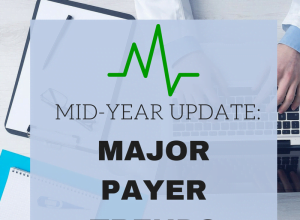When budget cuts loom and all the issues are big and thorny, one is naturally attracted to the small and overlooked initiatives that might make a difference. I recently discovered the President’s Malaria Initiative’s (PMI) “End-Use Verification Tool”, a short questionnaire being implemented to regularly monitor the availability of malaria diagnostics and medications at the health facility level in PMI focus countries.
When budget cuts loom and all the issues are big and thorny, one is naturally attracted to the small and overlooked initiatives that might make a difference. I recently discovered the President’s Malaria Initiative’s (PMI) “End-Use Verification Tool”, a short questionnaire being implemented to regularly monitor the availability of malaria diagnostics and medications at the health facility level in PMI focus countries.
The activity has been on-going since early 2009, implemented by JSI under the USAID | DELIVER PROJECT and by the Strengthening Pharmaceutical Systems project implemented by Management Sciences for Health. It is a quarterly survey administered to health facilities. Each of the countries started at a different time, so the number of times it has been implemented varies by country, with Tanzania having the most with 10 or 11 rounds. The sampling strategies vary by country, ranging from 20 health facilities per quarter, to 320. The survey was originally intended to provide quick, actionable information on malaria medicine availability, with an emphasis on the turnaround time for the analysis. More recently, however, the sampling strategy is being adapted to provide national level representation for some of the indicators. The surveys are now administered using a cell phone-based application called EpiSurveyor (see diagram below on how it works, courtesy of JSI).
So imagine –if the sampling were done well– a Minister, a program manager, a civil society advocate or a donor representative could have robust, independent information every quarter on the availability of rapid diagnostic tests and ACT, and a read out on available human resources and appropriate clinical practices. This is in sharp contrast to existing Global Fund and PEPFAR strategies for monitoring that rely mainly on self-reported, administrative data.
However, it is not yet clear how this valuable information is being used to improve supply chain efficiency and health provision effectiveness.
I have a couple of ideas on how this effort could be built into the Global Health Initiative (GHI):
- Transparency. At minimum, PMI, USAID and the other U.S. Government programs should post the raw data and results of the end-use verification survey (although the data is really the host government’s data, so they would need to be OK with sharing the data more broadly), on their websites. Since Tanzania has implemented the most rounds, you’d expect to see those trends analyzed somewhere. (Note to USAID/Tanzania – the last publication you posted is from 2007.) With greater transparency, civil society and researchers could use this information to better understand bottlenecks, pressure politicians and generally improve accountability. It could also feed into Global Fund grant planning.
- Demand forecasting. This survey sounds like a step in the direction of a functioning logistics management information system – probably, but not necessarily electronic – that gives decision makers timely and accurate information. Collection of this information was among the recommendations made by the Center’s Demand Forecasting Working Group in 2009. Given that many health systems continue to rely on historical budget and stock allocations, these data represent an opportunity to construct more accurate demand forecasts for government and donor purchasing, which in turn could result in more secure supply and –potentially- lower prices in the medium term.
- Other disease control priorities. If you are going out to health facilities already, why not check on vaccines, anti-helminthics, oral rehydration salts, family planning and other essential commodities? This is already being done in a number of countries (such as Ghana, Malawi and Tanzania), but can this survey be consolidated and leveraged to help out the entire GHI?
- Performance-based incentives. Both USAID and its contractors –including JSI- are discussing the possibility of using financial incentives to improve the performance of the supply chain. With this real-time, independent information on supply chain performance, could a portion of support to Central Medical Stores be conditional on progress?
I’d love to know more about how countries are doing, how much these surveys cost per round and how GHI plans to use and disseminate this information more widely. It seems to me that this is the sort of thing that USAID does best – in the tradition of the Demographic and Health Surveys – undertaking independent measurement to leverage better results, without getting in the way of recipient governments’ own processes.
Thanks to Mike Frost and Jim Rosen at JSI for their factual input into this blog. All opinions and errors are mine.

-330x220.jpg)





